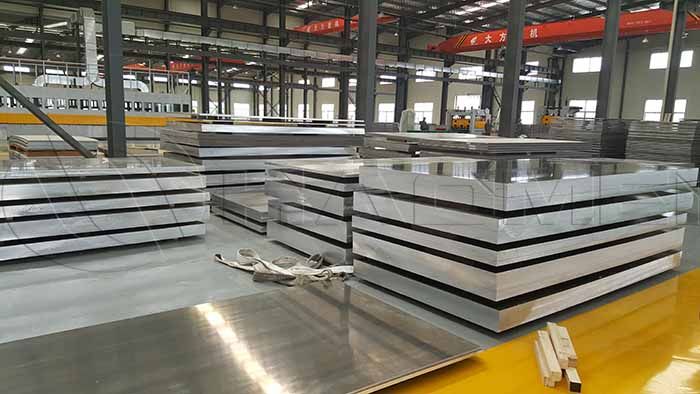How to Optimize 5083 Marine Grade Aluminum
In 1964, the United States built an all-aluminum barge, which used more than 180 tons of aluminum. Whether it was a plate or an extruded material, it used 5083 marine grade aluminum and ts cargo capacity was 14% higher than that of a steel barge. Tugboats can also be made of aluminum alloy. The hull of the American "Sauter" tugboat is welded with 5083 and 5086 alloys, and the manufacturing time is about 30% shorter than that of steel barges.
Aluminum alloy yachts for freshwater lakes are mostly made of 5052-H32 or 5052-0 aluminum plates, while luxury yachts on the sea are generally made of high-magnesium alloy 5083H116 or 5083H321 aluminum plates. They have undergone special processing technology, therefore having good corrosion resistance.

5083 aluminum offers the highest strength of all non-heat-treatable aluminum alloys and is used by many military and commercial vessels. The entire hull structure of the ships including keels and support frames can be made from marine grade 5083 aluminum. Although 5052 aluminum has better formability, 5083 aluminum has approximately 50% higher tensile and yield strengths.
The 5083 aluminum alloy is a medium-strength non-heat-treatable aluminum alloy, and Mg and Mn are the main alloying elements. The main work of optimizing the chemical composition of the 5083 alloy is to determine the content of Mg and Mn elements.
When combined with additive metals of appropriate composition, 5083 aluminum’s weldability is very good, and the corrosion resistance, especially seawater corrosion resistance, is also very good. However, when the Mg content is greater than 5%, the alloy is prone to stress corrosion. Therefore, the method of adding Mn or Cr is usually used to prevent this corrosion phenomenon.
Since 5083 tooling plate cannot be strengthened by heat treatment, its main strengthening method is work hardening. The processing technology is generally hot rolling, cold rolling and other processes after smelting to form a plate, and then stabilized to meet the corrosion resistance requirements.









